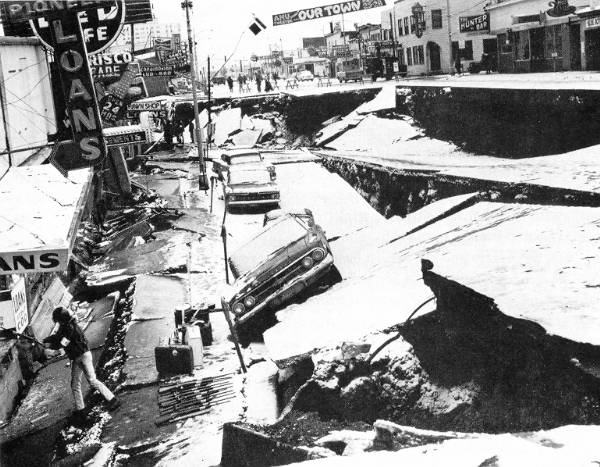Scientists to discuss earthquake and tsunami research advances
March 24, 2014

Amy Hartley
907-474-5823
3/24/2014
Why does the 1964 Great Alaska Earthquake matter 50 years later? Scientific experts will answer this question, acknowledging a half-century worth of scientific and monitoring advances triggered by the catastrophic quake, in a coming press conference.
At 10 a.m. on March 25, state seismologist Mike West, U.S. Geological Survey research geologist Peter Haeussler and Paul Whitmore, director of the NOAA National Tsunami Warning Center, will share how the 1964 quake occurred at a pivotal time in the history of plate tectonics theory, giving scientists a context to understand the hazards of megathrust earthquakes such as this magnitude 9.2 event. The catastrophic quake in 1964 led to the creation of modern, national programs to reduce risk from earthquakes and tsunamis.
The press conference will take place at the USGS Alaska Science Center, Leslie Holland-Bartels Main Conference Room, in the Glenn Olds Building at 4210 University Drive in Anchorage, Alaska.
Those in Fairbanks can participate through an audio bridge by calling toll-free at 1-855-547-8255. Use security code 77680#. Additionally, links to videos, photos and a fact sheet are available here.
State Seismologist Mike West is based at the Alaska Earthquake Information Center in the Geophysical Institute on the University of Alaska Fairbanks campus. The center operates the primary earthquake monitoring network in state. West has served as the state seismologist since 2012.
AH/3-24-14/247-14


